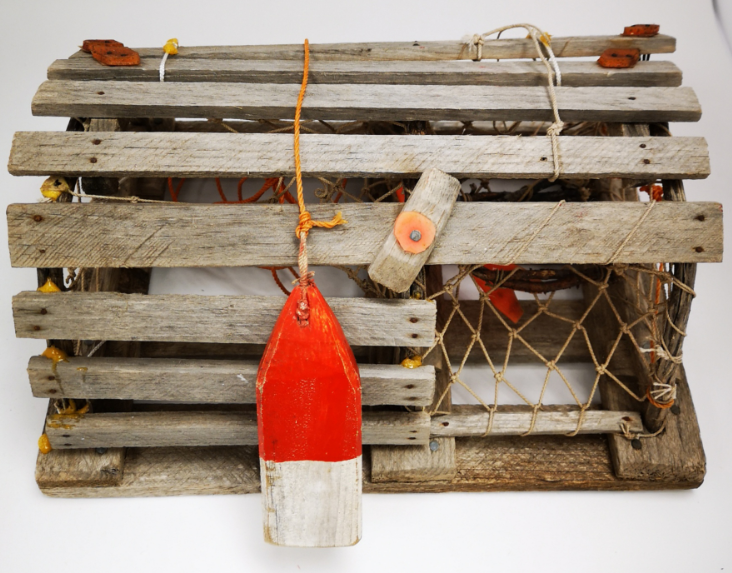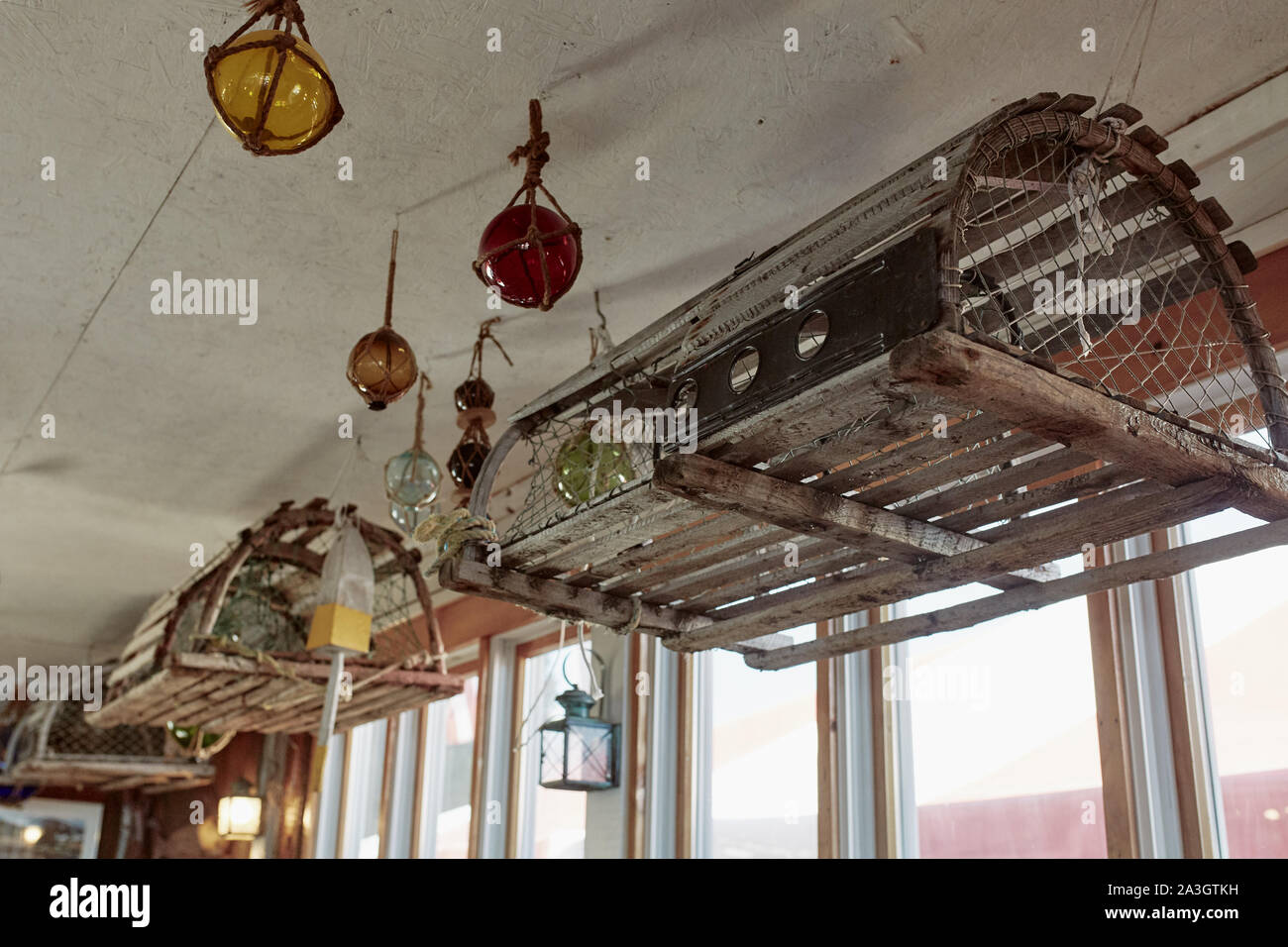In recent years, decorative lobster traps have gained a significant following among home decor enthusiasts. If you’re looking to add a touch of nautical charm to your living space, you’re in the right place! As someone who has personally transformed my home using decorative lobster traps, I can assure you that they bring a unique flair that speaks to both history and style. In this article, we’ll delve into everything you need to know about decorative lobster traps, from their history to how you can creatively use them in your home.
The History of Lobster Traps
Before we dive into decorative uses, it’s essential to understand where these intriguing items originated. Traditional lobster traps emerged in the northeastern United States and parts of Canada during the early 19th century. Fishermen designed these traps to catch lobsters as efficiently as possible. They are often made from wooden slats, mesh, and sometimes incorporate colorful patterns that reflect the local fishing culture.
The Evolution of Lobster Traps
Over the years, the designs of lobster traps have evolved significantly. While the primary purpose remains the same, the aesthetics have changed, leading to the rise of decorative lobster traps that can be used for home decor. Fishermen now often use plastic traps, but the wooden traps of yesteryear remain popular as decorative pieces.
Why Choose Decorative Lobster Traps?
Decorative lobster traps can enrich your home in numerous ways. Here are some compelling reasons to consider incorporating them into your decor:
1. Unique Nautical Aesthetic
The first aspect that draws people to decorative lobster traps is their unique aesthetic. They add a touch of coastal charm, perfect for beach houses or even city apartments looking to evoke that seaside vibe.
2. Versatility
These traps can serve multiple purposes, from display pieces to functional items. They can be used as coffee tables, plant holders, or even as creative storage solutions.

3. Conversation Starters
Inviting friends or family over? Decorative lobster traps are excellent conversation starters. Sharing the story of these traps and their use in fishing can draw people in and spark fascinating discussions.
How to Incorporate Decorative Lobster Traps into Your Home Decor
Now that we’ve established why they are desirable, let’s explore various creative ideas for incorporating decorative lobster traps into your home.

1. As Wall Art
One of the most visually appealing ways to display decorative lobster traps is by hanging them on your walls. You can create a unique gallery wall that showcases various traps, enhancing your space’s charm.
Tips for Wall Display
- Use traps of varying sizes for visual interest.
- Paint your walls a light color to enhance the traps’ colors.
- Mix with other nautical decor, such as nets or marine paintings.

2. Centerpieces for Tables
Your dining or coffee table can benefit from a decorative lobster trap centerpiece. This can be especially stunning during summer gatherings.
Creating a Table Centerpiece
- Place a trap in the center of the table.
- Add seasonal flowers or plants inside the trap.
- Incorporate candles for a warm, inviting atmosphere.

3. Functional Storage Solutions
Who said lobster traps can’t be functional? Use them for storing magazines, blankets, or toys. They offer a rustic touch while keeping your space organized.
Ideas for Functional Use
- Stack two traps for a stylish side table.
- Use them as stylish storage for craft supplies.

Different Styles of Decorative Lobster Traps
Decorative lobster traps come in a variety of styles, each offering something special. Below is a comparison table to help you understand the various styles available:
| Style | Material | Best For | Notable Features |
|---|---|---|---|
| Traditional Wooden | Wood | Rustic Decor | Hand-painted patterns |
| Rustic Metallic | Metal | Industrial Decor | Weathered finish |
| Modern Minimalist | Plastic | Contemporary Spaces | Sleek lines, bright colors |
| Beachy Chic | Mixed Materials | Coastal Homes | Natural finishes, vibrant colors |

Maintenance Tips for Decorative Lobster Traps
To ensure your decorative lobster traps remain vibrant and eye-catching, some basic maintenance is essential. Below are some tips to keep them in top shape:
1. Regular Cleaning
Dust and dirt can accumulate on your traps. Use a dry cloth or a soft brush to remove any debris. If your traps are particularly dirty, a mild soap solution can be used, but avoid soaking them in water.
2. Prevent Fading
Place your traps in areas with indirect sunlight to prevent colors from fading. If you want to display them outdoors, consider using UV-resistant coatings to protect them from the sun’s rays.
3. Repairing Damage
Check regularly for damages. If any parts are broken, use wood glue or a similar adhesive to fix them. For metal traps, consider using a rust-resistant paint to cover any rust spots.
Pros and Cons of Using Decorative Lobster Traps
Like any decor element, decorative lobster traps come with their advantages and disadvantages. Below is a quick rundown:
Pros
- Unique aesthetic appeal
- Versatile uses in home decor
- Rich history and storytelling potential
- Various styles to suit any room
Cons
- Can be heavy and challenging to move
- Some may require regular maintenance
- More suitable for specific decor styles (e.g., coastal, rustic)
Where to Buy Decorative Lobster Traps
Finding the perfect decorative lobster trap can be easy if you know where to look. Below are some suggested places to shop:
1. Home Decor Stores
Many home decor stores carry a selection of decorative lobster traps. Stores like HomeGoods or local boutiques often have unique finds.
2. Online Retailers
Websites like Amazon, Etsy, and eBay have extensive collections where you can find both new and vintage traps.
3. Craft Fairs and Antique Shops
For those who appreciate handcrafted or vintage items, exploring local craft fairs or antique shops can yield delightful surprises.
FAQs about Decorative Lobster Traps
1. Are decorative lobster traps suitable for outdoor use?
Yes, many decorative lobster traps can be used outdoors; however, ensure they are treated to withstand weather conditions.
2. How can I personalize my decorative lobster trap?
You can personalize your trap with paint, by adding your name, or by using it to display your favorite items such as shells or driftwood.
3. Can I make my own decorative lobster trap?
Absolutely! If you enjoy DIY projects, crafting a decorative lobster trap is a fun and creative way to customize your decor.
4. Are decorative lobster traps expensive?
Prices vary widely based on size, material, and craftsmanship. You can find affordable options as well as higher-end pieces.
5. What other nautical decor pairs well with lobster traps?
Items such as seashells, nautical ropes, ship wheels, and beach-themed artwork all complement the look of decorative lobster traps.
In conclusion, decorative lobster traps are more than just fishing tools; they serve as a charming addition to any home decor. With numerous ways to display them, various styles to choose from, and the potential for personalization, incorporating lobster traps into your home can be both fun and meaningful. By embracing their history and aesthetic, you can create a living space that captures the beauty of coastal living.